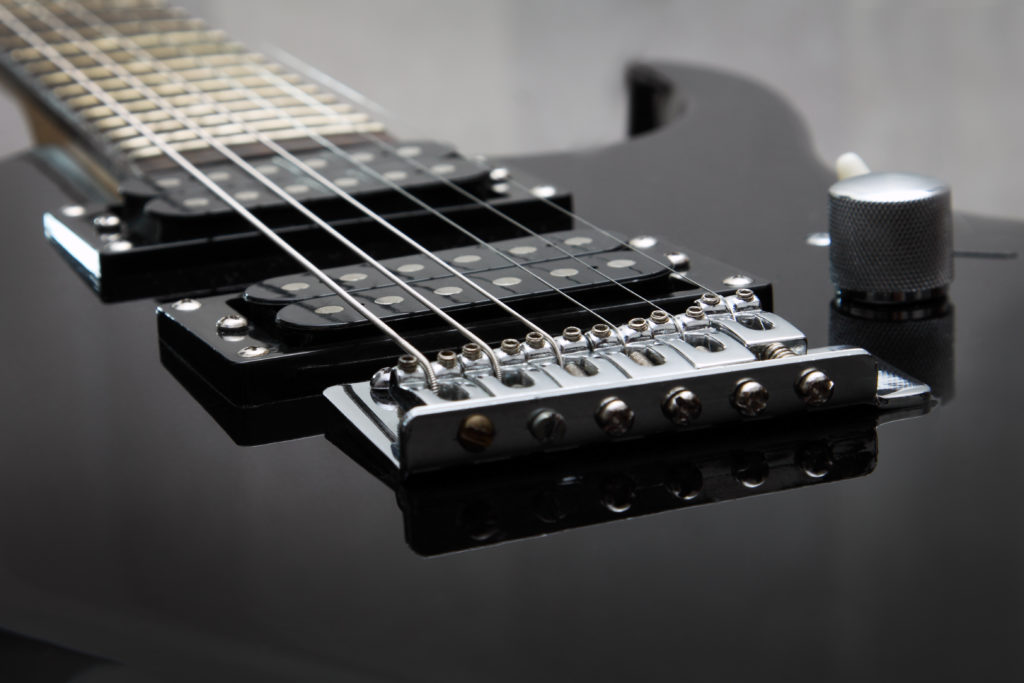5 Tips for Changing Your Guitar Strings
Author: Graeme Hague

There’s nothing like new guitar strings to give your playing some fresh zing. New strings with a bright and crisp sound can renew your enthusiasm for the instrument. It can even improve your playing. Also, because guitar strings deteriorate slowly, you often don’t realize what you’re missing until you replace them.
Changing strings is easy and even the high-end brands aren’t particularly expensive. Here are some general tips that could definitely come in handy and may even save you a few dollars along the way!
Table of Contents
1. Clean your guitar & fretboard before changing your strings
Most commercially available string cleaners won’t damage the timber of your guitar. Some wood polishes however, may affect your strings. If you decide to thoroughly clean your guitar and want to use dedicated timber polishes or oils for the fretboard, then do so before you change the guitar strings. It’s simple — if any of those products might damage the integrity of the strings, play it safe and clean your guitar first with the old strings still on. Hey, but what about taking all the strings off?
2. Replace your strings one at a time
You may already be well aware, but just in case — the vast majority of guitars contain a device called a “truss rod” which runs along the length of the neck. This counteracts the tension created by the six tightened strings. Removing all of your guitar strings means there is no more pressure to counterbalance. As a result, the truss rod can potentially bend your guitar neck the other way. It’s a delicate matter and even replacing the strings again might not return things back to how they were. To avoid this, changing strings one by one maintains the status quo of string pressure versus the truss rod. There’s another advantage. As you replace each string, you can tune the new one to concert pitch by using the old ones as a reference. It won’t stay that way for long, but close is good enough for starters.
3. Stay with the same gauge of guitar strings
Once you’ve selected a suitable string gauge (thickness of strings), you’re recommended to stick with it in order to guard against issues with the truss rod. To suddenly put on a heavier gauge of strings will exert more pull on the neck and raise the action. A lighter gauge on the other hand, may result in the truss rod overcompensating and lowering the action so much that the strings will rattle against the fret wires. By all means, carefully choose the best strings to suit your playing and don’t forget that different types (steel, phosphor bronze, flat-wound… there’s a million of ‘em) will give you a different sound. But once you’ve made up your mind, don’t change unless you’re prepared to tweak the guitar’s setup accordingly. Similarly, if you favour a string gauge that’s different from the factory set, you might need to ask someone at the music store to check the truss rod tension.
4. Get into the habit of cleaning your guitar strings
Your fingers secrete all kinds of oils and acids. On top of that, we’re constantly handling corrosive stuff all the time. Ever wolfed down a burger or coke while rehearsing? These will very quickly eat into your guitar strings making them sound dull and old faster than you’d think. A good string cleaner can make a big difference, but even if you don’t have one, just wiping down your strings with a clean cloth after every session can add many hours to your string life. Also, some string cleaners actually protect the metal from corrosion, so if you’re the sort of player who likes to leave your guitar out in the open and within reach, one of those products is a must.
5. Put your guitar away
The very air around us is full of nasty stuff that’ll dull and rust your guitar strings quickly. It’s a tricky one, because putting your guitar away and out of sight is not conducive to regular practice. Out of sight is out of mind, right? However, storing your guitar in a quality hard case is always a good idea. Your strings are protected from the elements and will last longer. The guitar itself, being made of wood and subject to temperature changes, will appreciate being tucked away somewhere nice and comfortable.
Two more quick tips
1. Always tune your guitar strings up to correct pitch
If the string is flat then simply wind the machine head up to tune. If the note is too sharp, reduce the tension to below pitch and then bring it back up. It lets the string “sit” better on the bridge and in the nut. Also, make sure you’ve got enough of windings around the machine head post. Not so many that you end up with a tangle of unused strings bunched around the post, but four or five times around is enough to ensure the string doesn’t slip.
2. Careful with the ends of the high B and E strings
Lastly, if you ever prick yourself in the finger with the end of the high B or E string, you’re not alone. After thirty years I’m still doing that. Yes, it hurts!








No comments yet - be the first.